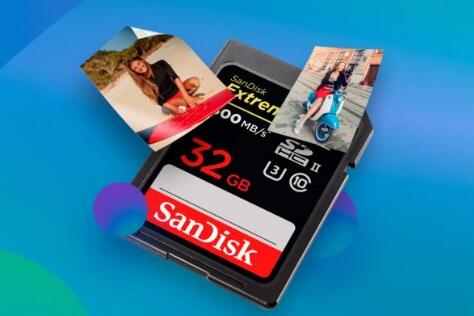Restoring erased pictures from an SD card can feel daunting, but with the right approach, you can often recover your valuable images.
Part 1: Understanding SD Card Data Storage and Loss
Before diving into recovery methods, it’s essential to understand how SD cards store data. SD cards use flash memory, which stores files as electrical charges. When you delete a file or format the card, the data isn’t immediately erased. Instead, the file system marks the space as available for new data. Until the system overwrites this space with new files, the deleted files can remain recoverable.
However, data recovery is not always guaranteed, and the success of recovery depends on several factors:
Overwriting: If new files have been written to the SD card after the deletion, the chances of successful recovery decrease.

Type of Deletion: If you used a quick format, the files may be recoverable, but if you used a full format, the data might be harder to retrieve.
Physical Damage: If the SD card is physically damaged, data recovery might require specialized services.
Part 2: Pre-Recovery Tips
Before attempting any recovery, follow these best practices to maximize your chances:
Stop Using the SD Card: If you continue to use the card after data loss, new files may overwrite the deleted photos, making recovery difficult or impossible.
Check the Recycle Bin: If you were using the SD card with a computer and accidentally deleted the pictures, check the computer’s Recycle Bin or Trash. Files that are removed from the SD card might be sent here if the card was connected via a reader.
Use a Different Device: If the SD card is not showing up in your camera or device, try inserting it into another device or card reader to ensure the issue isn’t with the device itself.
Part 3: Recovery Methods
Here are the various ways you can recover deleted photos from an SD card:
1. Use Data Recovery Software
Panda Assistant is a comprehensive data recovery software designed to assist individuals and businesses in recovering lost or deleted files from various storage devices. Whether it’s a computer, external hard drive, USB flash drive, SD card, or even a NAS device, Panda Assistant offers a versatile solution for data retrieval. The software is engineered to handle a wide range of data loss scenarios, from accidental deletion to system crashes, file corruption, or even hardware failures.
One of Panda Assistant’s key features is its intuitive user interface, making it easy for both novice and experienced users to navigate through the recovery process. It provides step-by-step instructions that guide users through the recovery of files, ensuring that even individuals with minimal technical knowledge can use it effectively. The program is designed to be efficient, with fast scanning capabilities that allow users to preview recoverable files before initiating the full recovery process. This preview feature helps users to assess whether their desired files are recoverable, saving both time and effort.
In addition to recovering deleted files, Panda Assistant can also recover data from formatted drives. It offers specialized tools to scan and retrieve data from partitions that have been accidentally formatted or corrupted. This is an invaluable feature, as many data recovery programs may struggle to recover files after a drive has been reformatted. Panda Assistant can handle complex recovery tasks, such as retrieving data from a damaged or partially corrupted drive, making it a highly reliable tool for both home users and professionals.
2. Use Built-in OS Recovery Tools
Both Windows and macOS have built-in utilities for data recovery, though they are typically not as powerful as third-party software.
Windows File History (Windows 10/11): If you’ve been using File History to back up your photos, you can recover them through the backup system. Simply right-click the folder where the SD card was stored and choose Restore previous versions.
Time Machine (Mac): If you use Time Machine for backups, you can restore photos that were previously backed up from your SD card. Open Time Machine, navigate to the backup date, and restore your lost images.
3. Check for Backups
If you’ve been backing up your photos regularly (either on the cloud or to an external hard drive), the easiest solution may be to simply restore them from the backup. Many cameras and smartphones automatically upload photos to cloud storage services like Google Photos, iCloud, or Dropbox.
About us and this blog
Panda Assistant is built on the latest data recovery algorithms, ensuring that no file is too damaged, too lost, or too corrupted to be recovered.
Request a free quote
We believe that data recovery shouldn’t be a daunting task. That’s why we’ve designed Panda Assistant to be as easy to use as it is powerful. With a few clicks, you can initiate a scan, preview recoverable files, and restore your data all within a matter of minutes.
Subscribe to our newsletter!
More from our blog
See all postsRecent Posts
- How to recover a deleted file from sharepoint? 2025-02-21
- How to recover a autocad file? 2025-02-21
- How to recover overwritten files? 2025-02-21










